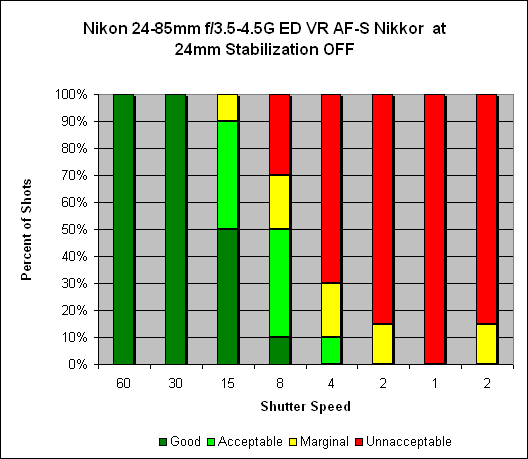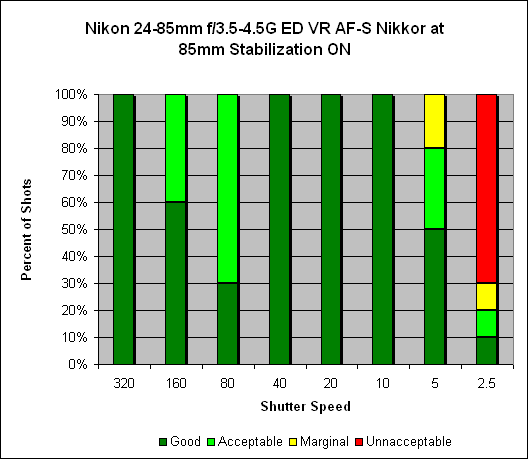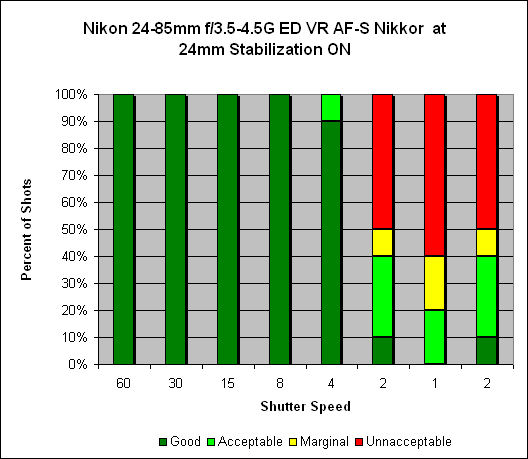Most people tend to think of image stabilization as being mainly for telephoto lenses. While it's true that their longer focal lengths tend to magnify the effects of camera shake, image stabilization can provde a very useful assist at wider angle focal lengths as well; anyone who's ever tried to blur the image of a waterfall, while keeping the surrounding landsape tack-sharp knows exactly what I'm talking about.
At the wide end (24mm), we note 2.5 to 3 stops of hand-holding stability: without VR activated, consistently sharp photographs are made at 1/30s, which is about what you would expect with the one-over-focal length as shutter speed rule of thumb. With VR activated, consistently sharp photographs can be made at speeds as slow as a quarter of a second, with a good percentage of keepers at a half-second. Many people don't see the value of VR in wide-angle lenses, but it also comes in very handy when making movies.
 |
| Mouse over this chart to show results with IS activated. |
At 85mm, the VR system works very well - with a few caveats. We got consistently sharp images at 1/320s, which is far faster than the one-over-focal length rule of thumb would predict (in defence of our tester shooter Rob, he did get a 50% keeper rate down to the 1/80s shutter speed). With the VR system activated, we get an additional (and impressive) 3.5 stops of hand-holding stabilization - but only in the slower shutter speed range (1/40s - 1/5s).
 |
| Mouse over this chart to show results with IS activated. |
There's some general improvement in the 1/80s and 1/160s points, but there is still some measure of blur in the majority of images shot there. We asked Dave Etchells to investigate further, and here are his thoughts: "For whatever reason, be it noise in the gyro or associated electronics, transient response to the mirror slap or shutter opening, there's a very slight blurring at shutter speeds around 1/80 - 1/160. It's not much, but it's enough to put the image just over the threshold of what we call "good" vs "acceptable". At slower shutter speeds, things settle down again.
"This is very reminiscent of what we've found with some Micro Four-Thirds cameras, which have a pretty pronounced impulse vibration when the first curtain opens fully: Some IS systems respond a little wildly to that sudden shock, in some cases making the IS-on results worse than IS-off at certain shutter speeds. Here, the impact on the IS system isn't enough to produce the sort of extreme blurring we saw on some of the Micro Four-Thirds systems, but it's enough to make shots taken between 1/80 and 1/160 just slightly soft looking."
IS systems tend to provide more benefit to less-stable shooters than very steady ones, so most users will see the same or greater amounts of shake reduction as we measured here. You can read more about our IS test methodology here: SLRgear IS Test Methodology, v2.
